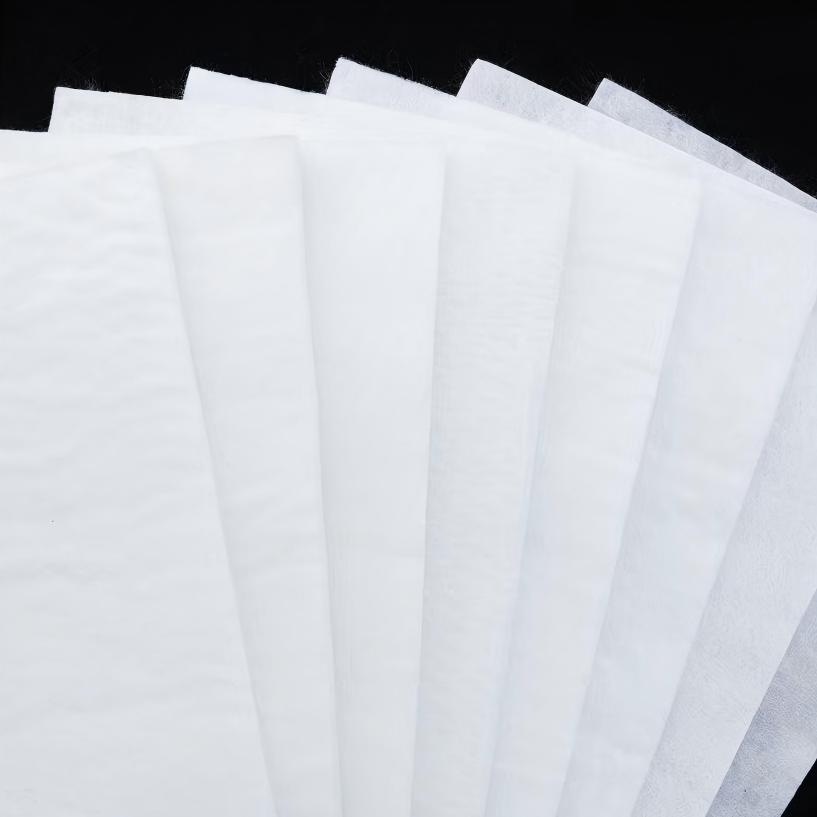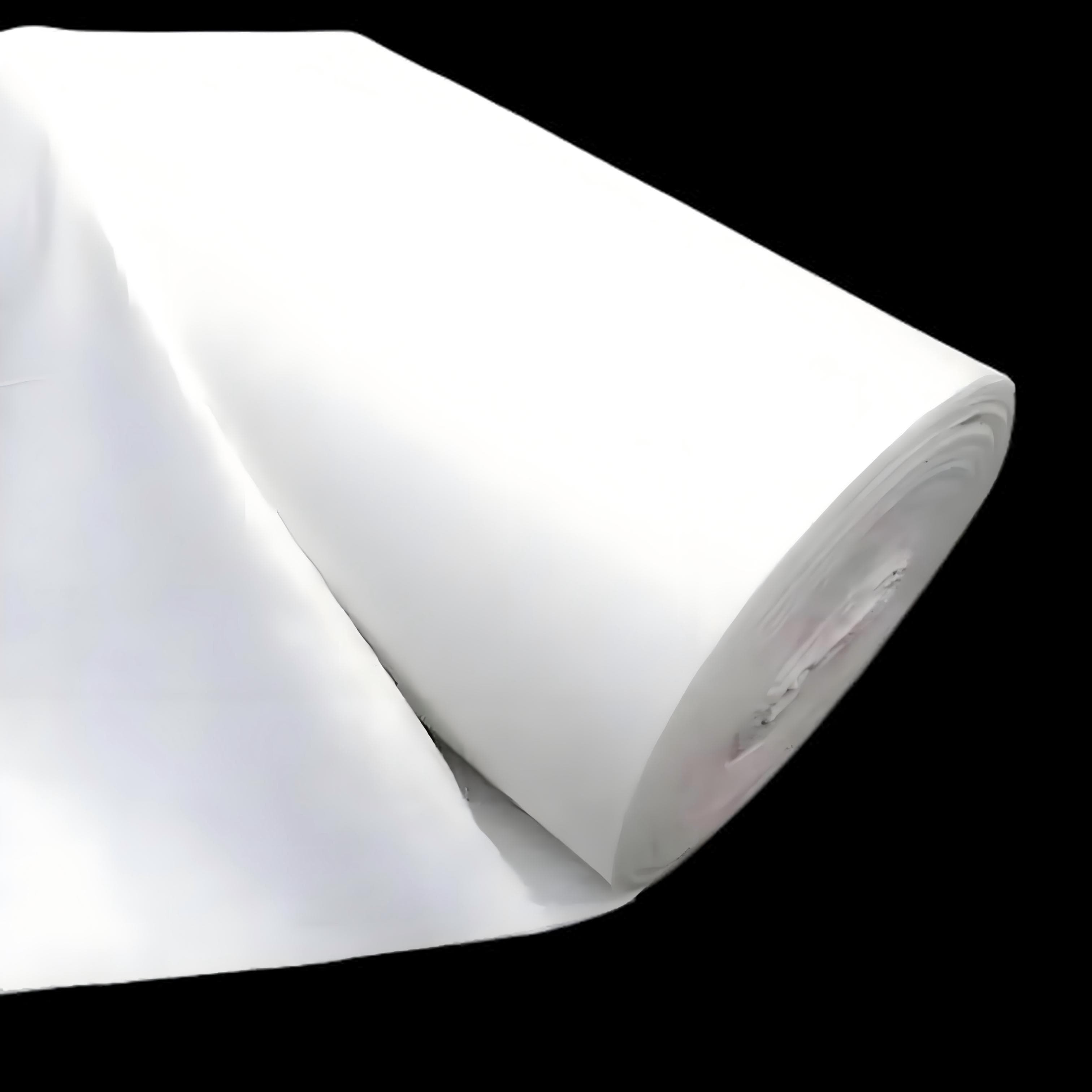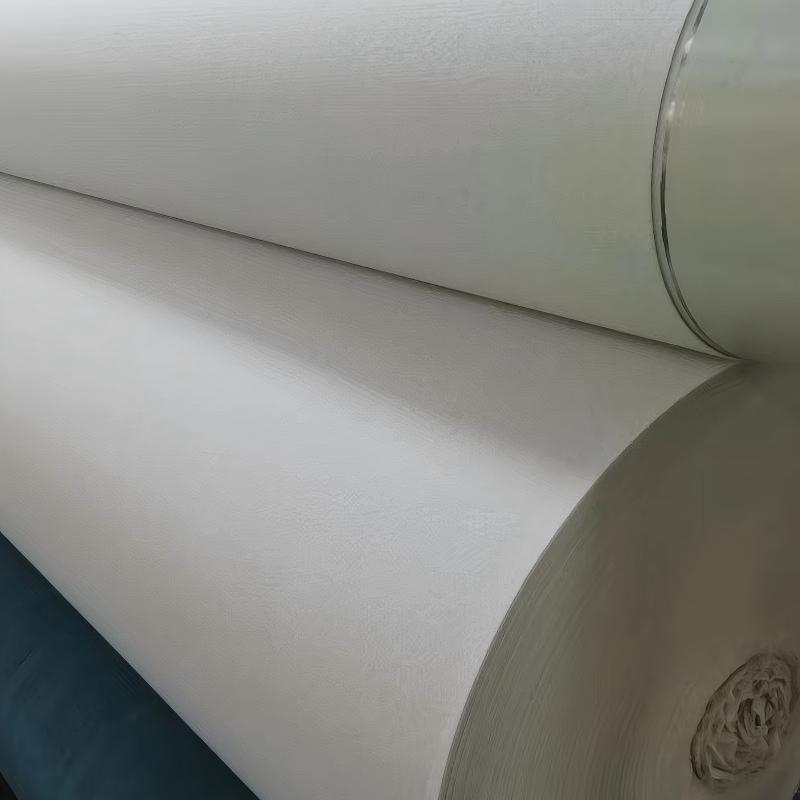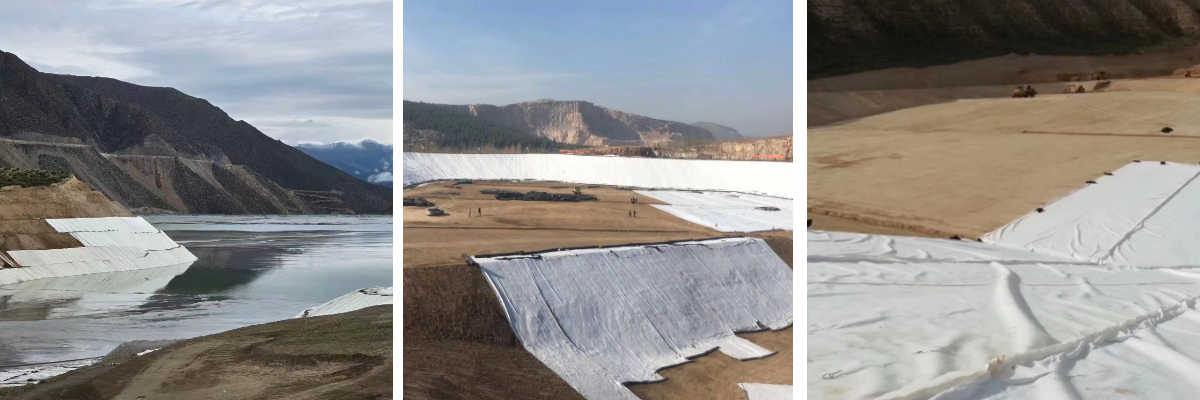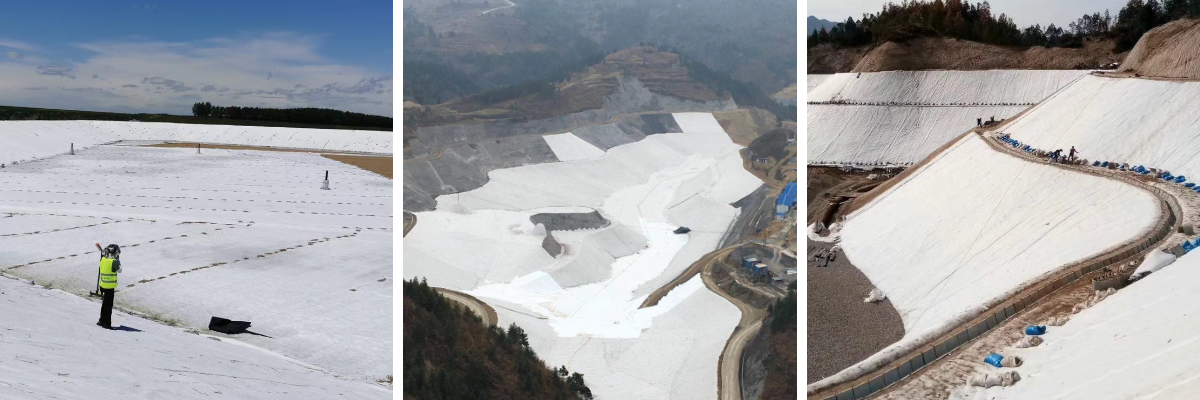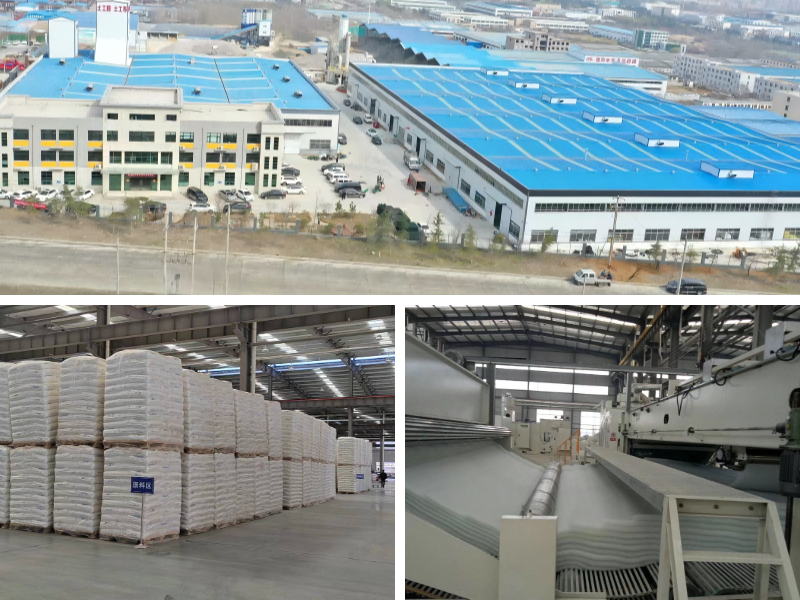Water Permeable Filter Fabric
1.Filtration mechanism: The "sieve effect" is formed through the fiber pore structure, allowing water to penetrate while preventing the loss of fine particles (such as sediment and clay) in the soil, thus avoiding structural damage (such as piping in dams and roadbed hollowing) caused by soil erosion.
2.Adaptability: When the pores of the material match the particle size of the soil, a "natural filter layer" can be automatically formed under the action of water flow, further enhancing the filtration effect and reducing the laying cost of the artificial filter layer (such as the graded sand and gravel layer).
3.Material Advantages: The high - molecular materials of polyester (PET) or polypropylene (PP) are used. It is resistant to acids and alkalis, and can withstand microbial erosion. In harsh environments such as humid, saline - alkaline areas (e.g., coastal dikes, marshlands), its service life can reach 10 - 15 years.
4.Composite functions: Besides anti-filtration, it also has the functions of drainage and water conduction (quickly discharging soil moisture and reducing pore water pressure) and isolation (separating different soil layers to prevent mixing), reducing the complexity of multi-material combined construction.
Product Introduction:
Water Permeable Filter Fabric is a geosynthetic material with special water - permeable and filtering functions. Its core function is to allow water to penetrate while preventing the loss of fine soil particles, thus achieving the effect of "draining water and retaining soil".
1. Core Definition: The Combination of Function and Characteristics
Essential Attributes: A water - permeable fabric made from high - molecular polymers such as polyester (PET) and polypropylene (PP) through needle - punching, weaving, or thermal - bonding processes.
Functional Positioning: Specifically designed for filtering engineering, that is, using the pore structure of the material to form a filter layer to prevent soil particles from being washed away (such as piping and hollowing) under the action of water flow, while ensuring smooth drainage.
2.Working Principle: The "Sieve Effect" of Permeability and Soil Retention
Filtration Mechanism
When water flows through the filter geotextile, the smaller water molecules can pass through the fiber pores, while the fine particles in the soil (such as sediment and clay) are blocked because their particle sizes are larger than the pores, resulting in the effect of "water - permeable but soil - retaining".
Self - filtration Effect: Under the long - term action of water flow, the blocked fine particles will form a natural filter layer on the surface of the fabric, further enhancing the filtration effect (similar to the principle of "biofilm").
Key Parameters
Equivalent Aperture (O95): It means that 95% of the apertures are smaller than this value. It needs to be matched with the soil particle gradation (for example, in sand projects, O95 is usually 0.05 - 0.2mm) to ensure "both water - permeable and soil - retaining".
Permeability Coefficient: It reflects the water permeability of the material. It is usually 10⁻² - 10⁻³ cm/s and needs to be greater than the soil permeability coefficient to avoid poor drainage.
Product Parameters:
project | metric | ||||||||||
| Nominal strength/(kN/m) | |||||||||||
| 6 | 9 | 12 | 18 | 24 | 30 | 36 | 48 | 54 | |||
| 1 | Longitudinal and transverse tensile strength / (kN/m) ≥ | 6 | 9 | 12 | 18 | 24 | 30 | 36 | 48 | 54 | |
| 2 | Maximum elongation at maximum load in longitudinal and transverse directions/% | 30~80 | |||||||||
| 3 | CBR top penetration strength /kN ≥ | 0.9 | 1.6 | 1.9 | 2.9 | 3.9 | 5.3 | 6.4 | 7.9 | 8.5 | |
| 4 | Longitudinal and transverse tearing strength /kN | 0.15 | 0.22 | 0.29 | 0.43 | 0.57 | 0.71 | 0.83 | 1.1 | 1.25 | |
| 5 | Equivalent aperture O.90(O95)/mm | 0.05~0.30 | |||||||||
| 6 | Vertical permeability coefficient/(cm/s) | K× (10-¹~10-), where K=1.0~9.9 | |||||||||
| 7 | Width deviation rate /% ≥ | -0.5 | |||||||||
| 8 | Unit area mass deviation rate /% ≥ | -5 | |||||||||
| 9 | Thickness deviation rate /% ≥ | -10 | |||||||||
| 10 | Thickness coefficient of variation (CV)/% ≤ | 10 | |||||||||
| 11 | Dynamic perforation | Puncture hole diameter/mm ≤ | 37 | 33 | 27 | 20 | 17 | 14 | 11 | 9 | 7 |
| 12 | Longitudinal and transverse fracture strength (grab method)/kN ≥ | 0.3 | 0.5 | 0.7 | 1.1 | 1.4 | 1.9 | 2.4 | 3 | 3.5 | |
| 13 | Ultraviolet resistance (Xenon arc lamp method) | Longitudinal and transverse strength retention rate% ≥ | 70 | ||||||||
| 14 | Ultraviolet resistance (fluorescence UV lamp method) | Longitudinal and transverse strength retention rate% ≥ | 80 | ||||||||
Product Applications:
Hydraulic Engineering: Anti-seepage Protection of Dams and Rivers
1. Dam Filter Layer Project
Application Scenarios: Downstream of reservoir dams and on the backwater slope feet of river embankments, used to drain seepage water from the dam body and prevent soil erosion.
Technical Advantages: Replace the traditional "sand + stone" filter layer, reduce the layered laying process, and increase construction efficiency by more than 50%; flexible materials can adapt to dam settlement and avoid filter failure caused by the displacement of the sand and gravel layer.
2.River Channel Slope Protection and Erosion Prevention
Application Scenarios: Laid on riverbanks and channel slopes to prevent the loss of slope soil caused by water erosion and drain the internal water of the slopes at the same time.
Technical Advantages: When combined with ecological slope protection technologies (such as grass planting and concrete grids), the filter cloth can protect the soil of plant roots from being washed away and promote plant growth .
Traffic Engineering: Drainage and Protection of Subgrade and Tunnel
1. Drainage of Highway and Railway Subgrade
Application Scenarios: Laid at the bottom or on both sides of the subgrade in rainy areas to drain the accumulated water in the subgrade and prevent subgrade settlement and mud boiling caused by water immersion.
Technical Advantages: Compared with blind ditch drainage, the combination of filter cloth and drainage board can reduce the amount of earth excavation, and is not prone to failure due to sediment blockage during long-term use (such as the subgrade drainage in the permafrost area of the Qinghai-Tibet Railway).
2. Tunnel and Abutment Filtering
Application Scenarios: Laid under the tunnel invert to drain groundwater and prevent sediment from entering the drainage system; laid behind the abutment back wall to prevent abutment displacement caused by the loss of backfill soil behind the abutment.
Construction Key Points: Select high-strength composite filter cloth to resist the lateral soil pressure after tunnel excavation and meet the drainage requirements (such as the filter layer of the Hong Kong-Zhuhai-Macao Bridge island-tunnel project).
Environmental and Municipal Engineering: Pollution Control and Ecological Restoration
1.Landfill Leachate Treatment
Application Scenarios: Laid above the anti-seepage layer at the bottom of the landfill to filter suspended solids in the leachate and protect the underlying drainage pipeline network from being blocked.
Technical Advantages: Resistant to acid and alkali corrosion (adapt to the highly corrosive environment of leachate), and has a high permeability coefficient (at the level of 10⁻³ cm/s), ensuring the rapid drainage of leachate (such as the renovation project of Beijing Asuwei Landfill).
2.Tailings Dam and Sludge Treatment
Application Scenarios: Laid downstream of the tailings dam body to drain tailings water and prevent the loss of fine - grained tailings; laid at the bottom of the sludge drying yard to accelerate the infiltration and discharge of water.
Material Selection: Select ultraviolet - resistant polypropylene filter cloth, which is suitable for open - air storage environment and has a service life of more than 10 years.
Agriculture and Ecological Engineering: Farmland Improvement and Wetland Protection
1. Farmland Irrigation and Saline-Alkali Land Improvement
Application Scenarios: Wrap the drainage pipes in the farmland sub-surface drainage system to prevent sediment from clogging the pipes; lay filter fabrics in saline-alkali land to isolate the salt-containing soil layer, and cooperate with drainage to reduce soil salinity.
2. Constructed Wetlands and Ecological Ditches
Application Scenarios: Laid under the wetland filler layer to filter suspended solids in sewage and prevent the loss of fillers (such as gravel); laid on the slopes of ecological ditches to protect vegetation and drain rainwater.
The Core Logic of the Application of Water Permeable Filter Fabric
Its essence of application is to solve three major engineering problems through the balance of "water permeability and soil retention":
1.Water - Soil Contradiction: Allow water to drain out while preventing soil from eroding;
2.Cost Contradiction: Replace the traditional sand - gravel filter layer at a lower cost;
3.Efficiency Contradiction: Simplify the construction process to adapt to emergency or complex - terrain projects.
From large - scale water conservancy hubs to small - scale farmland watershed management, water permeable filter fabric, with its integrated functions and technical and economic advantages, is becoming a key material in modern civil engineering.


